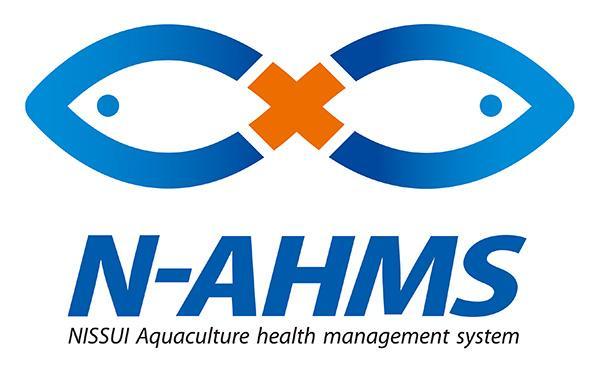
Research on Fish Diseases
At Nissui, we conduct research on countermeasures against fish diseases that threaten stable production in aquaculture, contributing to stable production in the Nissui Group's aquaculture business. For example, one of the problematic fish diseases in aquaculture is skin fluke, a parasite that lives on fish skin. Working together with a maker of veterinary drugs, we developed and commercialized a "diluted solution of hydrogen peroxide" method for eliminating skin fluke.
Establishing the N-AHMS® Fish Health Management System
To ensure stable production of high-quality farmed fish, we conduct research on managing the health of farmed fish and monitoring the aquaculture environment. We have established N-AHMS® (Nissui Aquaculture Health Management System) to enable aquaculture companies to effectively utilize these research results in their production operations, working to reduce fish disease risks and decrease the use of antimicrobials. Additionally, inspectors from the Central Research Laboratory conduct remote inspections of farmed fish using wearable cameras.



Figure 1. Pathogen handling facilities / Fish inspection using wearable cameras
Benefits of Remote Diagnosis Using IT
The use of web conferencing systems and wearable cameras helps streamline inspector training and quality control. Additionally, the introduction of electronic medical record systems has improved diagnostic accuracy through the sharing of test results and symptom photographs, establishing a system that enables faster and more precise countermeasures. Analysis and utilization of historical data are now possible, leading to accelerated development of fish disease prevention technologies. Regular web conferences strengthen disease prevention measures through information sharing and cooperation with aquaculture companies.
The system is being implemented across Group aquaculture companies, including Kurose Suisan Co., Ltd. (Japanese amberjack), Nissui Maguro Co., Ltd. (Pacific bluefin tuna), Yumigahama Suisan (coho salmon, mackerel), and Salmones Antártica S.A. (salmon and trout), where we continue to strengthen environmental monitoring and health management of farmed fish.

Figure 2. Structure of N-AHMS®
In-House Inspector Certification System
Under N-AHMS®, to improve the precision and reliability of farmed fish health checks, we have established an in-house certification scheme for Grade A inspectors and trainers who are responsible for health checks at aquaculture companies, thereby advancing the standardization of inspection quality.
